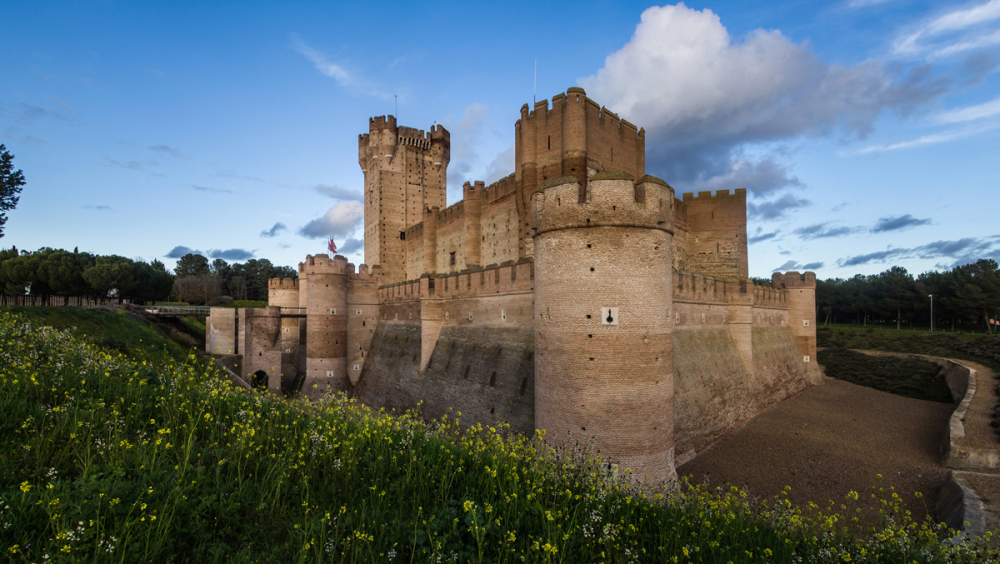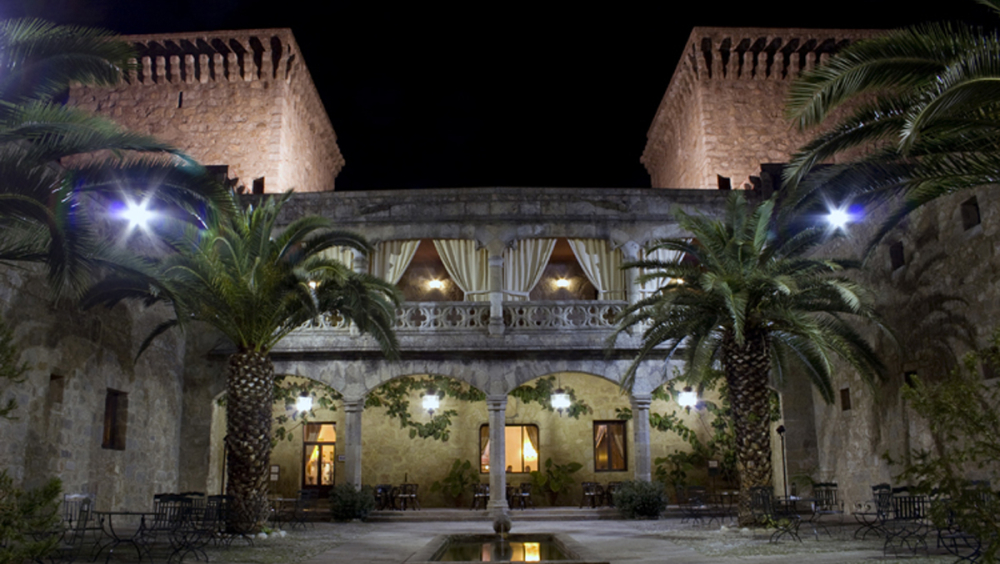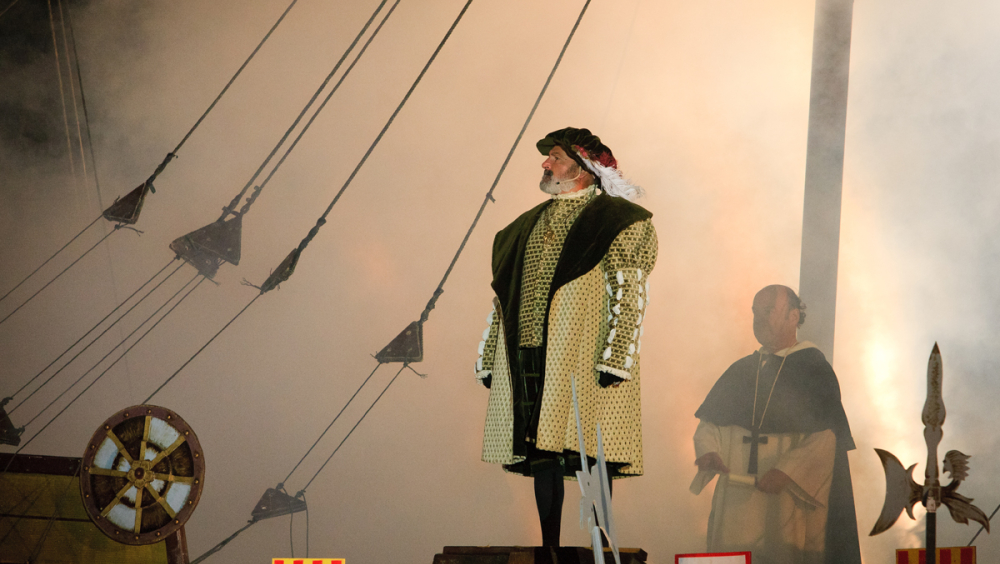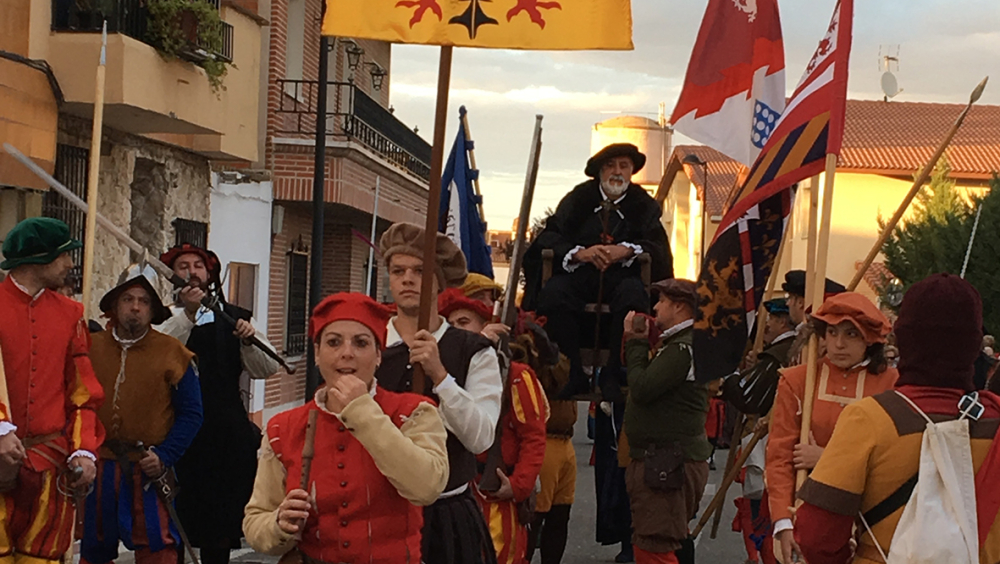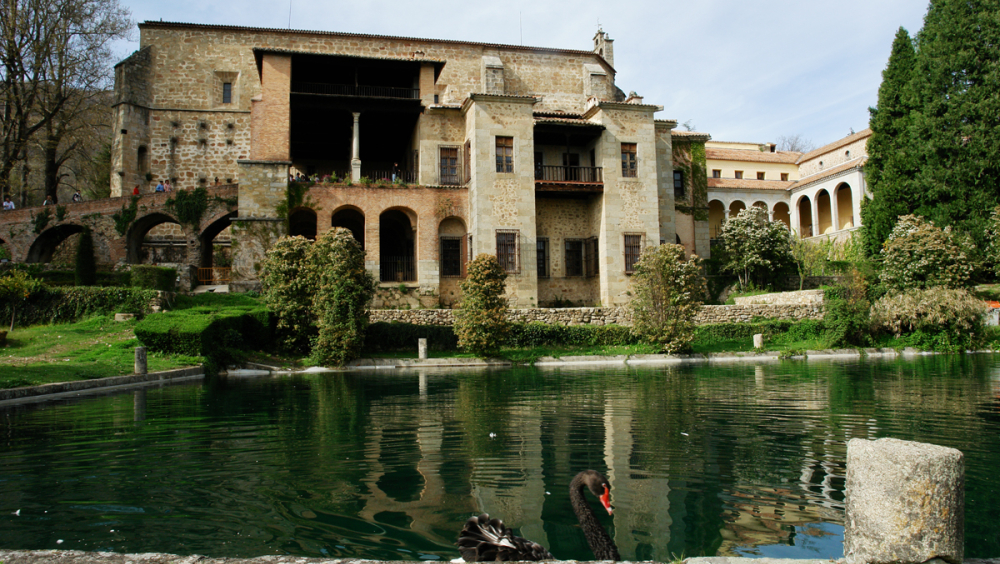“THE EMPEROR'S HERITAGE AT YOUR FINGERTIPS”.
The Route of the Last Journey of Emperor Charles V starts in the town of Laredo, on the north coast of Spain (in the region of Cantabria) and ends at the Parador Nacional de Turismo historical hotel in Jarandilla de la Vera (Cáceres). Charles stayed there for three months until work was completed on his palace next to the Monastery of Yuste. The palace’s cultural, historical and symbolic role is part of Europe’s heritage. Along the way, there are placenames that belong to Spain’s history: Medina de Pomar, Burgos, Valladolid, Medina del Campo, Tornavacas... The emperor's passage through them has become part of the lives of those places, recalled in the form of historical re-enactments in which hundreds of people take part, surrounded by sites of significant cultural heritage. Thousands of people visit the sites every year, attracted by a figure so full of history as Emperor Charles V, also known in Spain as Charles I.
Would you like to travel the route with us? We invite you to do it with our friends Miguel and Paula. Get your walking boots on and join them on their journey…
Paula looks at the open map on the table; it is big, covering the whole table. A map - "you can't imagine what it took me to get it" - Miguel told her as he unfolded it. With her dark hair, flat nose and two lively and captivating emerald-coloured eyes, Paula stands up to mark the points with a finger of the route that Miguel has already explained to her. He and Paula have recently turned thirty; they have been together for three years and have decided to visit some of the places along the Route of the last journey of Emperor Charles V. It covers almost 600 kilometres along roads and paths, in many cases the same ones the emperor travelled on his last journey to his longed-for retirement. The route includes a variety of landscapes, villages and cities in which castles, palaces, bridges, convents, stately homes, churches and monasteries make up an enormous cultural heritage that we have inherited from our ancestors. Indeed, Paula and Miguel are historians. The places along the way are where historical re-enactments take place every year to commemorate the last steps of the ailing emperor.
“Can you imagine the Playa de la Salvé with the emperor kneeling to kiss the ground and saying that he arrived there as naked as he left it?” Miguel asks Paula, pointing to Laredo on the map.
”Thousands of people take part in this historical re-enactment every year!” she replies, with an excited look on her face.
“Nobles, the bourgeoisie, ordinary people, fisherfolk... It's like going back to the 16th century in the 21st century! Four days when Laredo returns to 1556. On the Salvé Beach alone, almost 5,000 people crowd the grandstands to enjoy the historical re-enactment!”
Miguel's eyes also show his enthusiasm. They have been planning this route for years and are getting ready to travel along it over several weekends between September and November. It follows the same route as the one taken by the emperor until he reached his final retreat in the Monastery of Yuste, declared a Site of Cultural Interest and loaded with symbolism. Miguel then moved his finger downwards while keeping it fixed on the route until he stops at a specific point.
“In October, Medina de Pomar.”
“I can't wait to see the towers of the Alcazar de los Condestables!” Paula says excitedly. And I can’t wait to stroll through its streets. The town’s historic quarter preserves all its mediaeval flavour, surrounded by walls in which several gates remain.”
“Do we really have to wait until October?” she asks imploringly.
“Don't be in such a hurry!”, says Miguel. “You have to follow the route as the emperor did," he replies with a smile on his face.
He continues sliding his finger over the map and stops at Valdestillas. As well as the re-enactment, he has heard about the quality of the roast lamb that is served there and some of the typical desserts of the town that go back several centuries.
“It's not all going to be about history!", he says to Paula with a laugh.
“Of course, of course," she laughs, and then kisses him on the lips.
And then... “Medina del Campo!” he says.
“I can't wait to attend the performance at the Palacio de Rodrigo de Dueñas”, says Paula.
Her excitement is understandable, as nearly a hundred actors who have previously paraded through the streets of the town of the fairs, end the day at that point. There, visitors can watch the re-enactment of the moment when Rodrigo de Dueñas, a wealthy merchant from Medina del Campo, offered the emperor accommodation in his palace, now declared a cultural heritage site. Charles V was so angered by the excessive display of wealth in his presence that he ordered his men to pay Dueñas for the expenses incurred during his stay.
Paula then slides the finger of her right hand across the map until it stops at two points just a few centimetres apart on the paper, and a little less than two dozen kilometres apart on the ground.
Tornavacas and Jarandilla!
“The Cimero bridge!” exclaims Miguel. “The emperor apparently had a craving for some trout that some of the locals were fishing for at the time. And also the visit to the house of Iván Méndez, his majesty's servant," he adds.
“And why not some migas (shepherd’s breadcrumbs) too?” Paula asks.
“At the end of the Emperor's Route, they say that the migas they prepare in Cuacos de Yuste for people who walk the route year after year are delicious," he says, laughing. “There is also a crag there, not far from the square, where it is said that little Jeromín used to fight. Do you know who he was?”
“No, the name doesn’t ring a bell.”
“The future John of Austria, the illegitimate son that the emperor ordered to be brought to his side for the last months of his life. There are so many legends, natural areas and places to see!”
“I would love to do it all! After leaving the Parador Nacional at Jarandilla de la Vera, and stepping on the same stones as the emperor, crossing Aldeanueva de La Vera and Cuacos de Yuste to end up at the Monastery of Yuste”, she says with her eyes closed.
“But you’ve forgotten the breadcrumbs!” he replies, smiling.
“True!” says Paula.
They kiss each other without exchanging more words… at the end of the route is Jarandilla de la Vera and its Parador Nacional, formerly the castle of the Counts of Oropesa. The emperor took up residence there until work was completed on his palace next to the Monastery of Yuste. They know that Jarandilla de la Vera is is pushing the boat out for the arrival of Charles V, and they want to see the pond in Aliseda park, surrounded by the torches of the porters who accompanied the emperor. A unique spectacle.
“And a romantic evening at the Parador to conclude the route?” says Paula with a wink to Miguel, who accepts her kiss on the lips, followed by a few more kisses.
“Sounds a good plan, right?”
They both burst out laughing and look lovingly at each other.
If there were a list of convinced pro-Europeans before the existence of the EU itself, Emperor Charles V would occupy a prominent place on it. The route that recalls his last journey through Spain is another example of how a network has been created to recall his life through his travels and stays in different places, not only in Spain but also elsewhere in Europe. Germany (Mühlberg), Belgium (Ommegang in Brussels and Stroppendragers in Bruges) and Italy (the Historical Procession of Saint Severus) also remember the emperor with historical re-enactments as ways of revitalising the places where they are organised. In addition to promoting quality cultural tourism, the process of creation, development and implementation of the re-enactments involves all kinds of people of all ages. By doing so, they gain access to a character and his history and legacy for a few months. In short, it is an enriching experience that is transmitted along the paths and valleys where the name of Emperor Charles V is as vivid as his memory.

